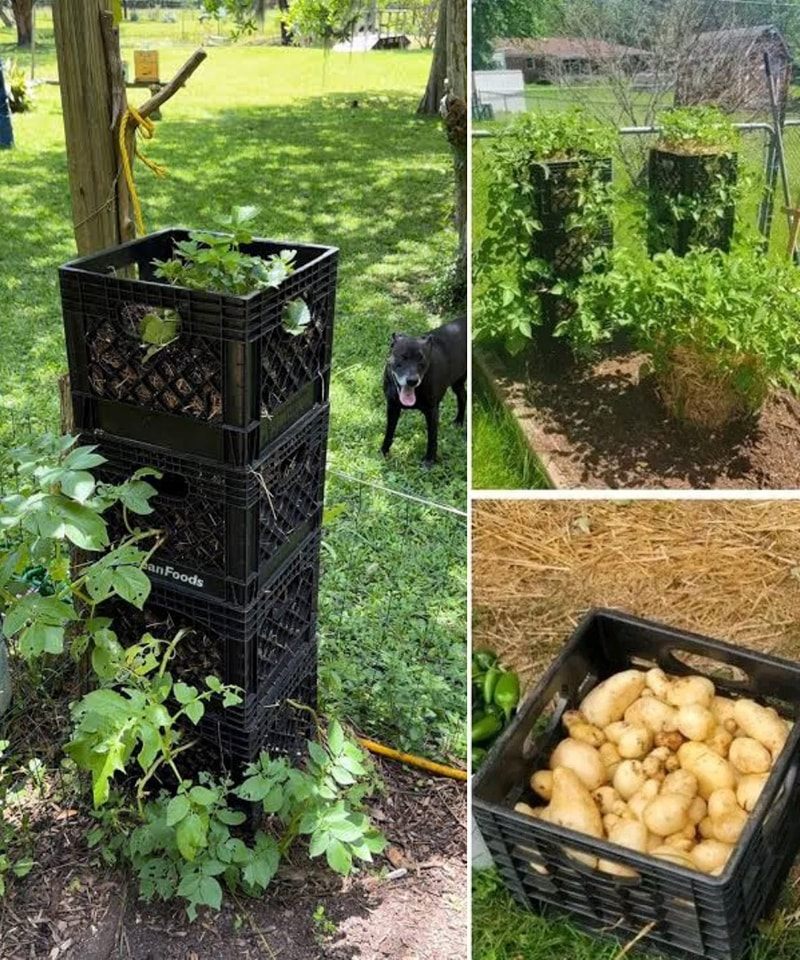ADVERTISEMENT

DIY Chicken Raising Guide: Smart Solutions for Backyard Poultry
Commercial feeders can be expensive and aren’t always designed for maximum efficiency. The DIY solutions shown in the images demonstrate how everyday items can become practical chicken feeders.
ADVERTISEMENT
Plastic Jug Wall-Mounted Feeders
As illustrated in the top-left image, plastic jugs mounted to a wall create an excellent feeding system:
Materials needed:
ADVERTISEMENT
- Clean plastic jugs (milk or detergent containers)
- Screws and washers
- Drill
- Utility knife
Assembly steps:
- Clean containers thoroughly with soap and water
- Cut an opening near the bottom of each container
- Drill holes near the top for mounting
- Secure to a wall at appropriate height
- Fill with feed as needed
This system prevents feed waste by controlling the flow of feed and keeping it elevated off the ground. It also protects feed from rain and moisture when mounted under a sheltered area.
ADVERTISEMENT
Gravity-Fed PVC Pipe Feeders
The bottom-left image shows another clever feeding solution using PVC pipes or plastic bottles:
Benefits:
ADVERTISEMENT
- Keeps feed dry and clean
- Minimizes waste
- Reduces frequency of refilling
- Prevents rodents from accessing feed
- Space-efficient design
DIY Tip: When creating tube feeders, ensure the opening is wide enough for chickens to access the feed but not so large that they can scratch it out and waste it.
Creative Nesting Box Solutions
Commercial nesting boxes are often overpriced for what they offer. The bottom-right image demonstrates how ordinary plastic buckets can be transformed into comfortable nesting areas.
Bucket Nesting Boxes
Materials needed:
- 5-gallon buckets or similar containers
- Wooden frame material
- Screws or nails
- Straw or other nesting material
Assembly steps:
- Cut buckets horizontally to create open-faced nesting areas
- Build a simple wooden frame to hold the buckets
- Secure buckets in the frame
- Add nesting material inside each bucket
Benefits:
- Easy to clean and disinfect
- Inexpensive and readily available materials
- Provides privacy for laying hens
- Can be removed individually for cleaning
Allow one nesting box for every 3-4 hens in your flock, as chickens actually prefer to share nesting spaces.
Water Systems for Healthy Chickens
Though not prominently featured in the images, water systems are crucial for chicken health. Here are some DIY watering solutions:
Nipple Drinker Systems
Materials needed:
- Plastic bucket with lid
- Poultry nipples (available online)
- Drill with appropriate bit
Assembly steps:
- Drill holes in the bottom of the bucket
- Install nipple waterers in the holes
- Fill bucket with water and hang at appropriate height
- Chickens will quickly learn to peck the nipples for water
Benefits:
- Keeps water clean and prevents contamination
- Reduces water waste
- Minimizes risk of water-borne diseases
- Less frequent refilling needed
Practical Tips for Successful Chicken Raising
Beyond housing, feeding, and watering, consider these additional aspects for successful backyard chicken keeping:
Optimal Flock Size
Start small with 3-5 birds, especially if you’re new to chicken keeping. This provides:
- Manageable learning curve
- Sufficient egg production for a small family (3-5 eggs daily)
- Opportunity to expand later as you gain experience
Choosing the Right Breeds
Different chicken breeds offer various benefits:
- Rhode Island Reds, Sussex, and Leghorns: Excellent egg producers
- Orpingtons and Wyandottes: Friendly dual-purpose birds (eggs and meat)
- Silkies and Polish: Ornamental breeds with unique appearances
- Bantams: Smaller varieties perfect for limited spaces
Health Maintenance
Preventive care keeps your flock thriving:
- Regular coop cleaning (weekly deep clean recommended)
- Dust bathing areas using wood ash or diatomaceous earth
- Proper ventilation without drafts
- Secure enclosures to protect from predators
Sustainable Integration with Your Garden
Chickens and gardens can form a mutually beneficial relationship when managed properly:
Chicken Tractors for Garden Preparation
Mobile chicken enclosures allow birds to:
- Clear areas of weeds and pests
- Till soil with natural scratching behavior
- Fertilize ground directly
- Prepare beds for planting
Composting System
Create a composting setup where:
- Kitchen scraps go to chickens for initial processing
- Chicken manure and bedding material create rich compost
- Finished compost enriches garden soil
- Garden produces vegetables, with scraps returning to chickens
This closed-loop system maximizes sustainability and minimizes waste.
Common Challenges and Solutions
Even with the best setup, chicken keepers face challenges:
Predator Protection
Ensure your coop and run are secure against:
- Raccoons and opossums (secure latches)
- Hawks and owls (covered runs)
- Foxes and coyotes (buried hardware cloth around perimeter)
- Neighborhood dogs (sturdy fencing)
Winter Considerations
In cold climates:
- Insulate the coop without eliminating ventilation
- Use the deep litter method for additional warmth
- Consider a safe heating option for extreme temperatures
- Provide extra feed during cold weather
Legal Considerations
Before establishing your backyard flock:
- Check local zoning regulations and HOA restrictions
- Understand limits on flock size in your area
- Note restrictions regarding roosters (often prohibited in urban areas)
- Consider neighbor relations and noise concerns
Conclusion
Raising chickens at home using DIY solutions like those shown in the images provides a rewarding and sustainable addition to your lifestyle. From repurposed plastic containers as feeders to bucket nesting boxes, these creative approaches make chicken keeping accessible and affordable.
The initial investment of time in creating these systems pays dividends in reduced ongoing costs, decreased environmental impact, and the satisfaction of self-sufficiency. Whether your motivation is fresh eggs, teaching children about food sources, or simply enjoying the amusing antics of backyard chickens, these DIY solutions help create an optimal environment for both birds and keepers.
With proper planning, a bit of creativity, and the willingness to repurpose everyday items, your backyard chicken operation can become a model of sustainability and practical design. The chickens will be healthier and happier, and you’ll enjoy the fruits of your labor with every fresh egg collected.
Ready to start your chicken-keeping journey? Begin collecting materials for these DIY projects today, and you’ll soon be enjoying all the benefits of backyard poultry raising with minimal expense and maximum satisfaction.
